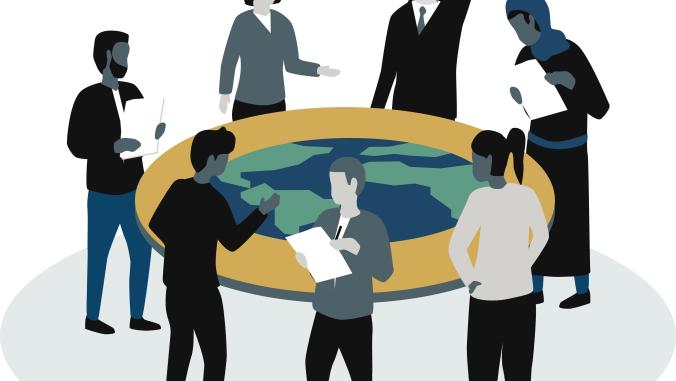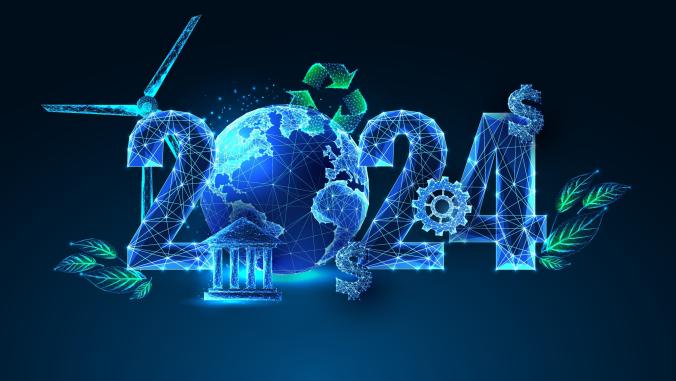Tracing materials across the value chain: The shifting landscape
<p>As information technology advances, the issue of “traceability” has emerged from the domain of information specialists to a more central issue of business strategy and competitive differentiation.</p>

Hardly a day goes by without a major incident involving what a global company doesn’t know about its product ingredients, performance of supply chain partners or diversion of intended product uses for customers. From coffee to chemicals to counterfeit materials, what you don’t know about your business can hurt you and cost you.
As information technology advances, and the costs of acquiring information about product development, distribution and use continue to decline, the issue of “traceability” has emerged from the domain of information specialists to a more central issue of business strategy and competitive differentiation.
What is traceability? Known frequently as “trace and track,” the idea of traceability has evolved across three emerging pathways that include:
- An ability to obtain and verify the physical location, status and history of a material, item or data.
- A risk-based approach designed to protect the safety of people, and the security of facilities, business processes and products across the value chain.
- Assurance of a product or product ingredient’s safety and security for its intended use.
Individual companies have somewhat different definitions of traceability, and must tailor traceability systems and practices to their unique business processes and product mix, but a robust approach will embody elements of all three pathways. Some companies also embed life cycle analysis within their traceability systems.
Why has traceability emerged as a major issue in the management of global business operations? A number of drivers help explain the increasing attention to traceability issues. They include:
- The globalization of business through extended supply chains, expanded business networks and the growth of multiple licensees.
- Advancement of technologies that enables many more participants to gain access to traceability information and apply it for their own individual or organizational objectives.
- Proliferation of labels, management systems, product standards and certification requirements.
- The need to protect and communicate quality, brand equity and reputation.
- Increasing importance of educating regulators, stakeholders and customers on changing technologies and product characteristics.
- Growing need for cyber security and protection against hackers, state-sponsored business espionage and organized criminal networks.
- Government policy initiatives—e.g., REACH.
- Societal demand for increased transparency that extends to the points of material extraction/sourcing or resource management.
Amidst the interaction of these various drivers, however, is growing consumer confusion over conflicting product claims, product standards and differing certification and labeling schemes.
Technology and Traceability: Smarter Supply Chains
Future supply chain management will require greater connectivity, collaboration and network processes to improve efficiency and transparency among partners in common networks. This is leading to end-to-end traceability of inventories of components and finished products. Existing and emerging applications include temperature tracking, targeted product recalls, reducing spoilage and waste, and increasing consumer safety.
More robust traceability systems will also require serialization—a unique number placed on an item or pallet whose names can be changed through the supply chain. Serialization provides a common global identifier to enable business managers across the value chain to measure the status of an ingredient or product.
Traceability systems can empower both businesses and consumers by, for example, determining the genealogy of a material; knowing if a product or ingredient is a banned substance or on a recall list; determining whether a product is authentic or counterfeit; and verifying product claims (“organic”).
Traceability technologies and systems also enable the implementation of sustainability initiatives by: increasing the visibility of the supply chain and the accountability of the sourcing of its individual elements (e.g., placing a code on every tree in a forest); achieving supply chain efficiencies (e.g., reducing food waste, improving the efficiency of logistical operations across a supply chain vs. discrete operations or siloed entities); and enhancing advanced analytics by enabling better prevention and prediction options (e.g., calculating the optimal timing for wineries to harvest grapes); upgrading the use of qualitative information (e.g., screening for child labor practices among supply chain firms); and empowering business process innovation.
Traceability and Materials: The Development of “Actionable Intelligence”
“Big data” is the basis of many future developments involving traceability. The opportunities going forward involve making the transition from data acquisition and analysis to actionable intelligence. The building blocks for the new systems under development are: 1) where has a material been? 2) where is it now? And 3) where is it going?
The actionable intelligence business model is evolving in the following manner: data (from tags, codes and sensors)→information (data receipt and integration)→knowledge (actionable intelligence)→prediction (modeling/simulation).
Tomorrow’s materials will feature the miniaturization of computing and GPS devices; use of motion-based nano-generators; embedded materials that are also data containers that cannot be counterfeited; intra-product communications; and printed three-dimensional circuitry and sensors on packaging. Increasingly, traceability tools and systems are being leveraged with emerging customer and social networks.
A major opportunity going forward is the integration of new materials and traceability technologies into business processes that respond to both real time needs and also prevent problems from occurring. These new capabilities will create new demands for the ability of products or ingredients to “broadcast” encrypted information in addition to replying to queries. Such technologies will also be adapted for other purposes, including chemical security, incident prevention and the staging of personnel and equipment.
Potential Next Generation Practices and Future Trends
- Applying serialization to prevent tampering.
- Incorporating technology into products and processes (e.g., rail cars of the future) to create barriers for thieves, counterfeiters and others.
- Managing traceability in high risk countries.
- Driving traceability systems and thinking into regulations.
- Expanding collaboration practices through partnerships.
- Applying traceability to individual ingredients.
- Creating business opportunities and synergies through enhanced security, safety, quality, environmental sustainability and other initiatives through more integrated systems.
- Integrating traceability with customer communications.
- Leveraging the large amounts of already existing data through the improved use of analytics.
These and other individual best practices both reflect and will be further shaped by future trends in technology, the marketplace and government policy. Some of the major emerging trends include:
- The evolution of technologies and practices will create new platforms for transforming traceability objectives from the management of business risk into opportunities for assuring customers and other value chain participants that the value of their products and brands is protected. For example, companies that want their products’ histories to be known can use tags embedded in packaging to “announce” a product’s geographic origins, life cycle results or other attributes (“organic”). Traceability thus improves risk management and enables competitive differentiation.
- There is a continuing evolution for how to answer “what’s enough reporting?” for traceability and related issues (e.g., product standards, certification). Information that is adequate for today’s needs will be insufficient in the future. At the same time, there is a recognition that not all of the information collected or requested by external stakeholders is useful or actionable.
- Companies must assess “what do customers want to know?” Companies continue to ask this question of their B2B and B2C customers as they seek to define a sustainability value proposition for their businesses. Mechanisms for sharing information among companies continue to develop, while observing legal requirements.
- Issues related to the confidentiality of traceability information are expanding. These include existing practices designed to protect against counterfeiting or theft; more recently, issues related to cyber security and software integrity are assuming greater importance.
- Practices for the protection of the confidentiality of traceability data are increasingly shaped by newer issues such as: the information boundary zone between publicly accessible cloud computing vs. private systems; and new partnership models (e.g., business/government/NGOs) and their responsibilities and protocols for protecting confidential business information.
- While technology is an enabler, innovation also requires integrating technological applications with robust business processes.
- The expanded use of traceability systems can also become a disruptive force in the product marketing, especially for consumer products companies. For years, marketers have inserted their own claims, labels and, in many cases, opinions on a product’s benefits. Traceability systems could displace these statements with information that is more factual and verifiable by third parties. The traditional demarcation between “brand names” and “private brands” could change as a consequence.
In summary, the era of traceability is upon us. Those companies that have developed an understanding of traceability systems and practices will apply them to further align their value chains around common standards and processes; reduce business costs for themselves and their business partners and customers by substituting more cost effective information for higher cost materials and logistics; advance their competitive position; educate their customers and stakeholders to enhance their brands; and apply traceability initiatives as another means to make their business strategies and operations more sustainable and differentiated in the marketplace.
Note: The perspective presented by Dr. Yosie is the result of deliberations of the IBM-World Environment Center “Innovations for Environmental Sustainability Council.” Announced in January 2012, other founding members include: Boeing, CH2M Hill, Coca-Cola, Dow Chemical, F. Hoffmann-La Roche, General Motors, Ingersoll Rand, Johnson & Johnson, and Walt Disney. Other topics being addressed by the Council this year include: sustainable buildings and infrastructure; innovation for water resource management; and sustainable logistics.
Image of Cargo loading, stuffing and vessel loading by Jan Hyrman via Shutterstock





